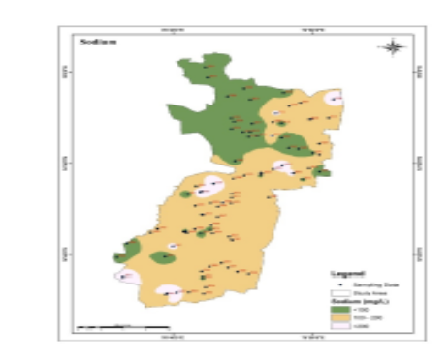


Indian Journal of Science and Technology
Year: 2023, Volume: 16, Issue: 7, Pages: 516-530
Original Article
S N Abhishek1*, A R Pradeep2, C Rangaraj3
1Research Scholar, Department of Civil Engineering, Sri Siddhartha Institute of Technology, Tumakuru, Karnataka, India
2Assistant Professor, Department of Civil Engineering, Sri Siddhartha Institute of Technology, Tumakuru, Karnataka, India
3Professor, Department of Civil Engineering, Sri Siddhartha Institute of Technology, Tumakuru, Karnataka, India
*Corresponding Author
Email: [email protected]
Received Date:23 December 2022, Accepted Date:29 December 2022, Published Date:23 February 2023
Objectives: To ascertain whether the groundwater in Molakalmur Taluk is suitable for human consumption and it is anticipated that the study will assist regulators and policymakers in taking the proper actions to provide the study area’s population with safe domestic water. The study’s overall goal is to examine the suitability of groundwater for domestic purposes in accordance to WHO and BIS standards. Methods: The current study was carried out to analyze the water quality and spatial distribution of physicochemical parameters of groundwater in study area. A total of 92 groundwater samples were collected in the study region for study during both pre- and post-monsoon monsoon period, ArcGIS 10.1 was used to create a spatial distribution map based on a geographic information system. The concentrations of various ions like Ca+2, K+1, Cl-1, Mg+2, HCO3 -1, Na+1, CO3 -2, and SO4 -2 were evaluated as per BIS 3025 (2014) and compared with BIS and WHO standards for drinking purpose. Findings: The Gibbs diagram shows that the two main elements that affect the chemical composition of groundwater are evaporation and rock-water interaction. Weathering of silicate minerals and carbonate minerals are the principal sources of carbonate and bicarbonates. Roughly 68% and 58% of the samples exceeded the permissible level of 500 mg/l for TDS. According to the interpretation of Piper’s trilinear diagram, the majority of the water samples fell into the categories of mixed CaMgHCO3, MgHCO3, and CaCl2 types, in that order of dominance. The plot shows that alkaline earths correspond to 75% of the samples. Novelty: The major ion chemistry of the groundwater in Molakalmur Taluk has never been studied, and there is no perennial river in the research area. The current investigation makes an effort to investigate if water is suitable for domestic purpose. The study’s conclusions will help with the gathering of vital information on the condition of the groundwater in Molakalmur Taluk. The study’s conclusions may also beuseful to groundwater managers and city planners in their efforts to restore and enhance groundwater quality. Keywords: Groundwater; Physicochemical Parameters; Gibbs Diagram; Pre-Monsoon; Post-Monsoon Water Quality; Geographic Information System; Pipers Chart
© 2023 Abhishek et al. This is an open-access article distributed under the terms of the Creative Commons Attribution License, which permits unrestricted use, distribution, and reproduction in any medium, provided the original author and source are credited. Published By Indian Society for Education and Environment (iSee)
Subscribe now for latest articles and news.